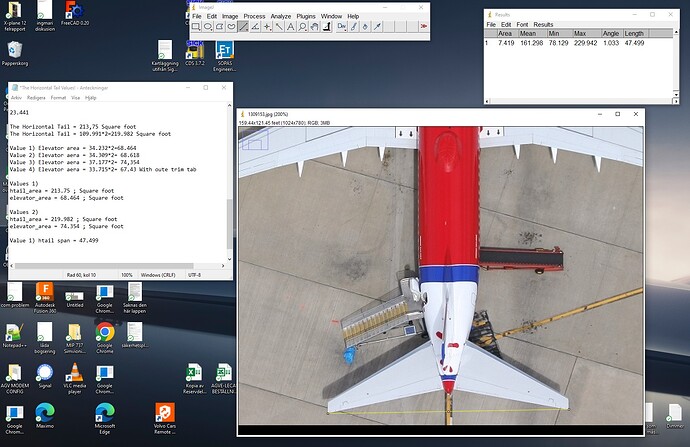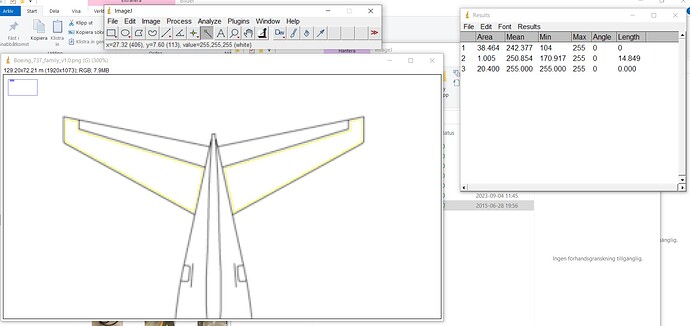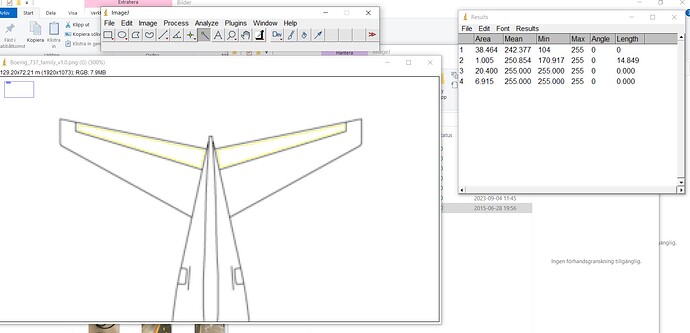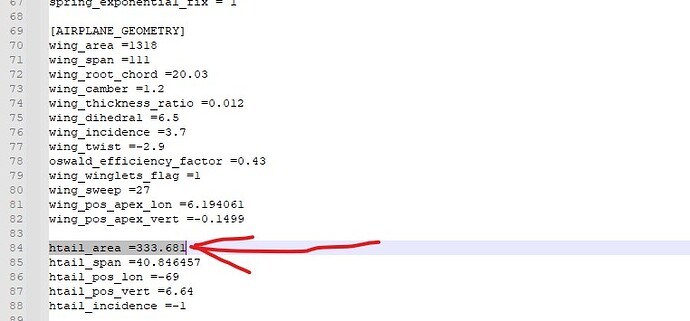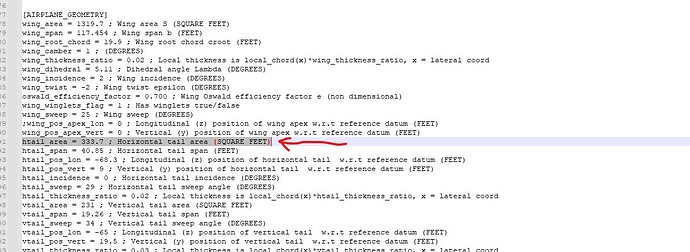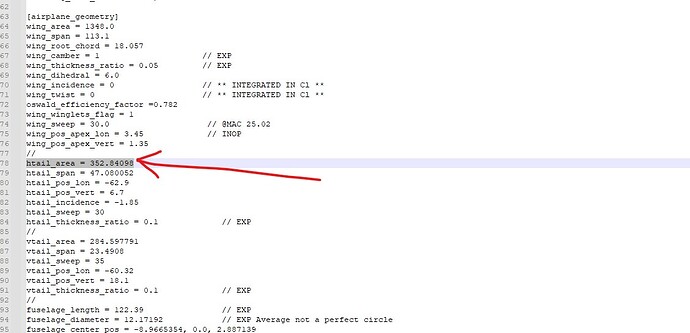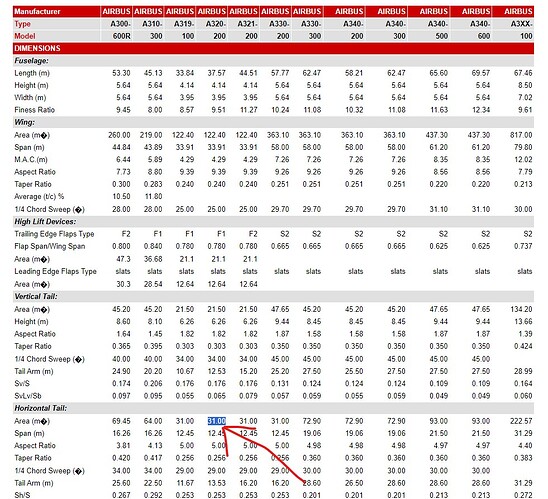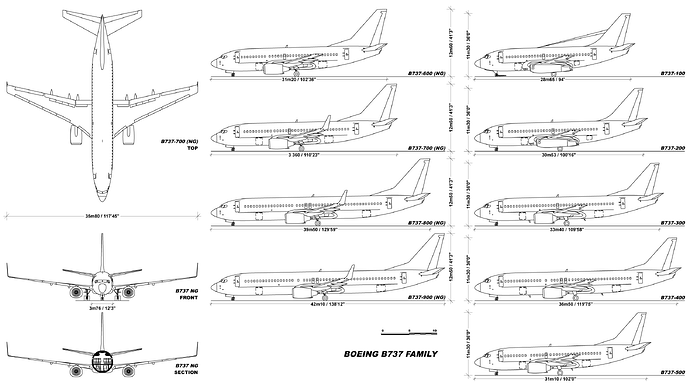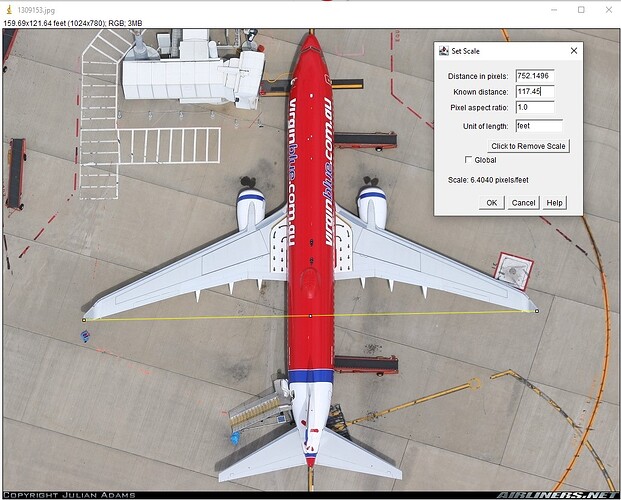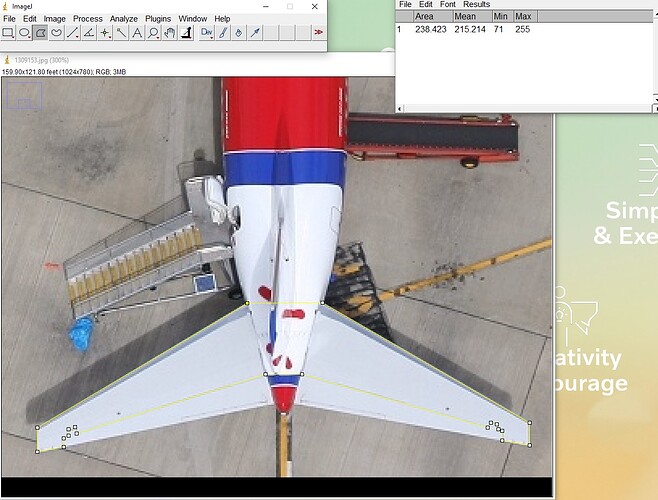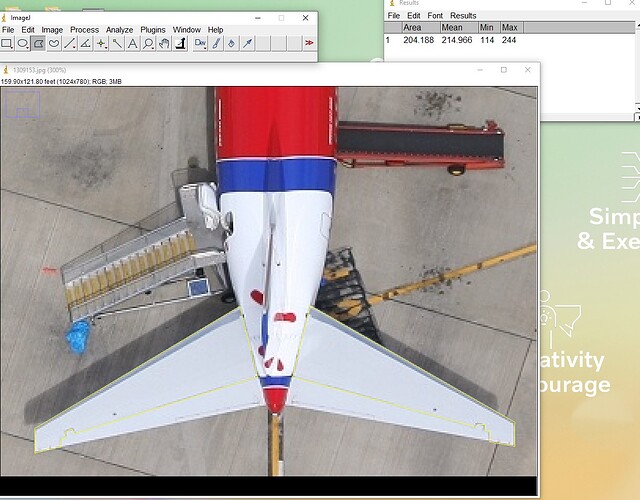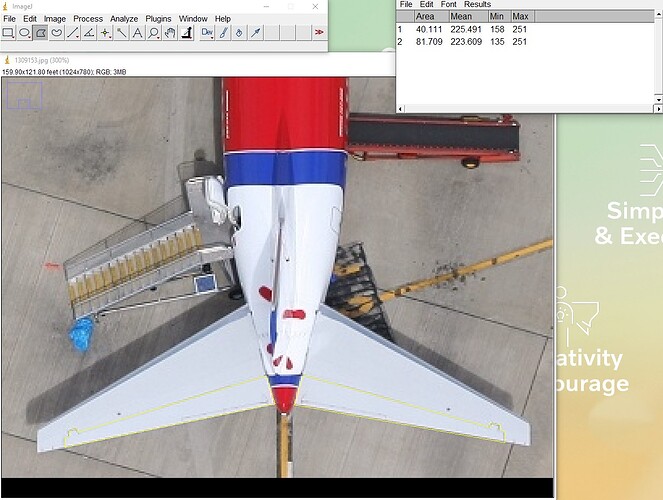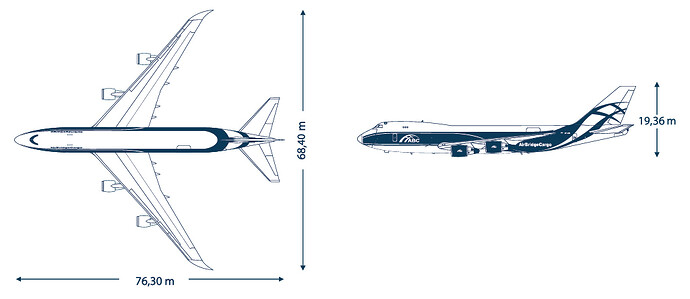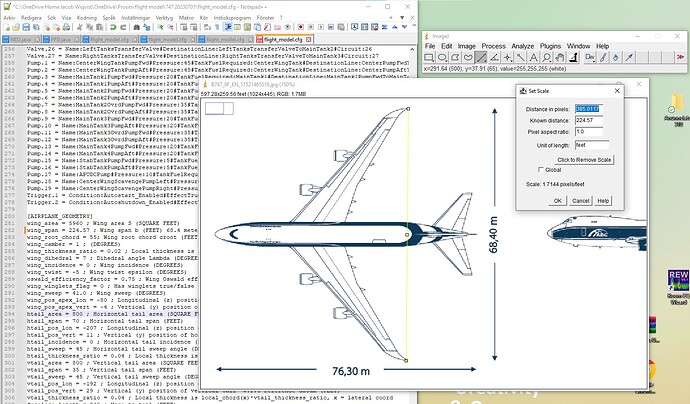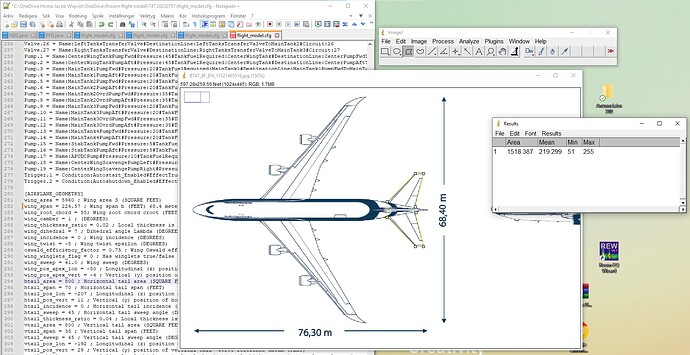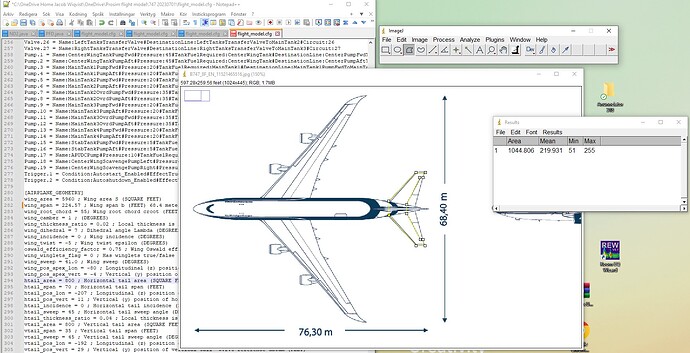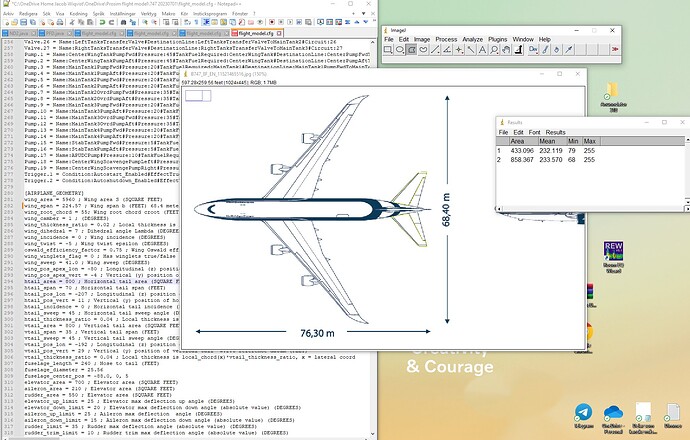Questions about geometry on htail_area:
How to think about geometry on htail_area?
I have noticed that many aircraft developers have at least 30% more area on “htail_area”. Why?
If you look at the A320 original in MSFS, it has 200 square feet in size on this surface, but both FBW A320, Fenix A320 and PMDG have over 300, let’s say 300-400 square feet.
If you look in documents online, they indicate area values for stabilizer, but this includes elevator, I guess.
If I calculate the values I get, it will be the following.
htail_area
Value 1: 213.75 if you add elevator to this value, which is not correct according to the SDK, you get:
213.75+68.464=282.214
Value 2: 219.982+74.354=294.336
I get a value of between 282 and 294 square feet if you add htail_area and elevator together. This is still far from the value stated online, 32.78 square meters or 352.84098, 352 is closer to the value used by PMDG, Fenix and FBW.
20.4 m2 or 219.58377 ft2
Could it be that all of these have miscalculated the geometry? Or is it wrong in the SDK?
The SDK says this:
Area of the static part of the horizontal stabilizer (not counting the elevator area), in sqft.
Notice “NOT COUNTING THE ELEVATOR AREA”
If this is true, the most seasoned and respected aircraft manufacturers to MSFS have miscalculated. Very wrong.
I’ve tried to figure out why but can’t. Are they too front heavy?, is the CG positioned incorrectly, are the forces too small if you make it 30% smaller, have they thought wrong and calculated the total surface of the stabilizer? Is there an error in the SDK?
Why do I think like this?
This is how I calculated:
1: Found as good a picture as I can of the aircraft from above.
2: Obtain a reliable measurement of the aircraft, which I can use as a reference value.
2: Found a program that I can use to calculate the area of an image. The program I use is called: ImageJ
3: Calibrated image by wingspan, Span with Winglets 35.79 m (117 ft 5 in)
4: Plotted the area I want to measure on the picture, then I get, as you can see: 213.75-219.982, i.e. quite close to the value 200 that ASOBO uses on its A320 but far from PMDG, Fenix and FBW.
One thing to note is that if I run CFD the tail stabilizer get to strong with there values.
Another thing I’ve noticed is that if I change this value to what I’ve been getting about 220, the stabilizer seems to be too weak and the plane has to trim much more heavily.
What could be the reason that these aircraft’s developers chose this value? Are the aerodynamics not right in MSFS?

